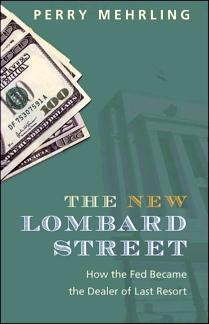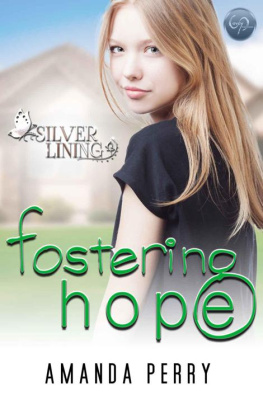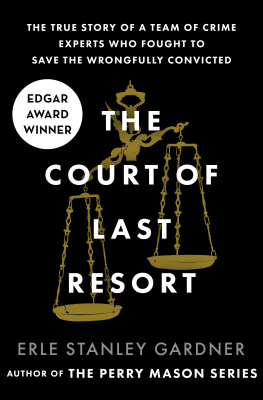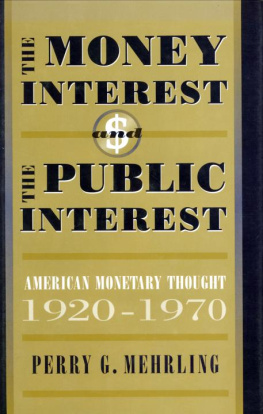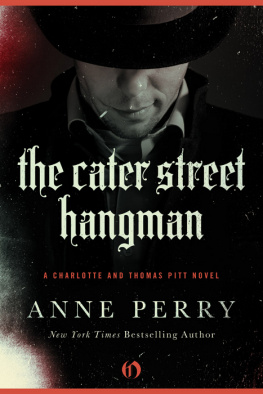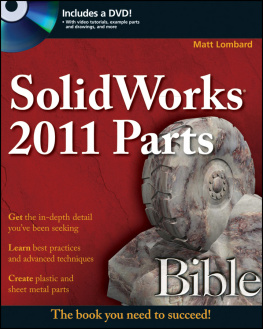Perry Mehrling




To Judy, the kids, and the grandkids
I am by no means an alarmist. I believe that our system, though curious and peculiar, may be worked safely; but if we wish so to work it, we must study it. Money will not manage itself, and Lombard Street has a great deal of money to manage.
-Bagehot (1906 [1873], 20)
Xi


This book has taken me fifty years to formulate, but it was Seth Ditchik's query back in November 2008 that finally got me to write it. Given the drama playing out before our eyes, he thought there might be room for a book that would put the current crisis in some larger historical perspective, and he thought I might be the person to write it. I don't know that I have written exactly the book he had in mind, but I can definitely say that I have written the book I had in me. It revisits terrain that I have toured in my previous books, The Money Interest and the Public Interest (chaps. 2 and 3) and Fischer Black and the Revolutionary Idea of Finance (chap. 4), but the perspective is new. That perspective has been hard-won from experience of more than a decade teaching patient New York undergraduates how the money markets downtown actually work (chap. 5). But it is also fresh in the sense that it has been forced sharply into focus by the events since August 2007, and by my attempt to participate constructively in the policy response to those events (chap. 6). The "money view" that I had been developing in the classroom seemed to make sense of what was happening even when other more familiar views, from economics and finance both, did not.
Above all others, Larry Kotlikoff deserves thanks for arranging my accommodations at Boston University during the year 20082009, for pushing me into the policy process, and then for backing off and letting me write the book. Probably I have not written the book he would have liked-he has written that book himself, under the title jimmy Stewart Is Dead-but the book I have written would be quite different, in ways that are impossible to imagine, without him. Thanks also to Joe Stiglitz and the folks at Columbia University's Initiative for Policy Dialogue for making room for my somewhat premature maunderings about credit default swaps back in May 2008, and to Jamie Galbraith and the folks at Economists for Peace and Security for multiple opportunities to present my developing views, first in November 2008.
Thanks also to those, mostly at the New York Fed, who worked tirelessly behind the scenes to create the programs that put a floor under the crisis, programs that I believe show us the road toward a workable future beyond this crisis. It is the nature of their work that I know a lot more about the programs than the people, so they are largely unsung heroes, but heroes nonetheless. Thanks also to my academic colleagues who, beyond the call of scholarly duty, found time in the middle of their own work to read and comment on chapter drafts along the way: Roger Backhouse, Aaron Brown, Andre Burgstaller, Ben Friedman, Charles Goodhart, Rob Johnson, Anush Kapadia, David Laidler, Daniel Neilson, Goetz von Peter, Sanjay Reddy, and Roger Sandilands. Probably all of these-both Fed staff and academic colleagues-will find something to disagree with in the book, and that is as it should be; one lesson of the history I relate is that when academics and practitioners agree, we should worry.
Thanks finally to my family, who made room for yet another summer of Papa In His Study, not excluding even two August weeks in Cortona, Italy, where the first draft of chapter 3 was produced. None of this would have been possible without your lasting support. It takes a family to write a book; you are mine, and this is yours.
The financial crisis that started in August 2007 and then took a sharp turn for the worse in September 2008 has proven to require more than the Subprime Solution advocated by the Yale professor Robert Shiller, and to involve significantly greater loss than the Trillion Dollar Meltdown foreseen by Charles Morris. It is instead proving to be what Mark Zandi has called an "inflection point in economic history." That means that we need a historical perspective in order to understand our current predicament and to see beyond it to a possible future.'
The intellectual challenge of producing such an account is large, given the scope of the crisis that is transforming not only banking and financial institutions and markets but also the regulatory and supervisory apparatus within which those institutions operate, including most dramatically the role of the Federal Reserve. On this last point alone, textbooks still teach that the main task of the Fed is to control the short-term rate of interest in order to achieve a long-run inflation target. Ever since the crisis began, however, the Fed has instead been fighting a war, using every weapon at hand, including a number of new ones never used before.
"Lender of last resort" is the classic prescription for financial crisis. "Lend freely but at a high rate" is the mantra of all central bankers, ever since the publication of Walter Bagehot's magisterial Lombard Street: A Description of the Money Market (1873). That is what the Fed did during the first stages of the crisis, as it sold off its holdings of Treasury securities and lent out the proceeds through various extensions of its discount facility.
But then, after the collapse of Lehman Brothers and AIG, and the consequent freeze-up of money markets both domestically and internationally, the Fed did even more, shifting much of the wholesale money market onto its own balance sheet, more than doubling its size in a matter of weeks. In retrospect this move can be seen as the beginning of a new role for the Fed that I call "dealer of last resort."

